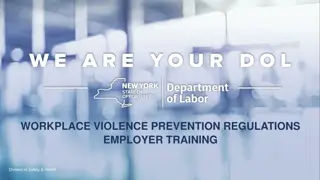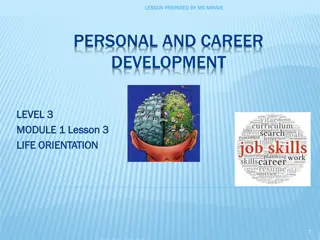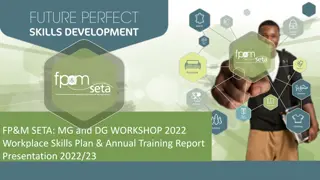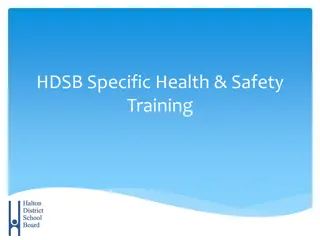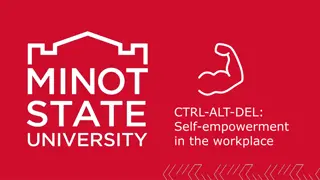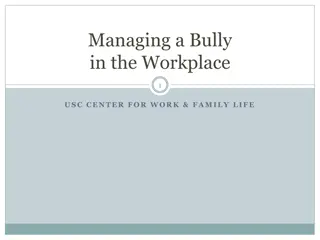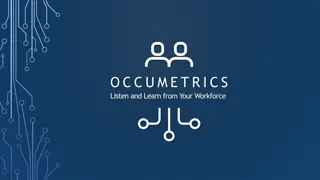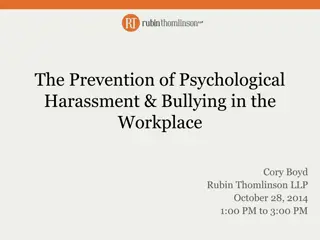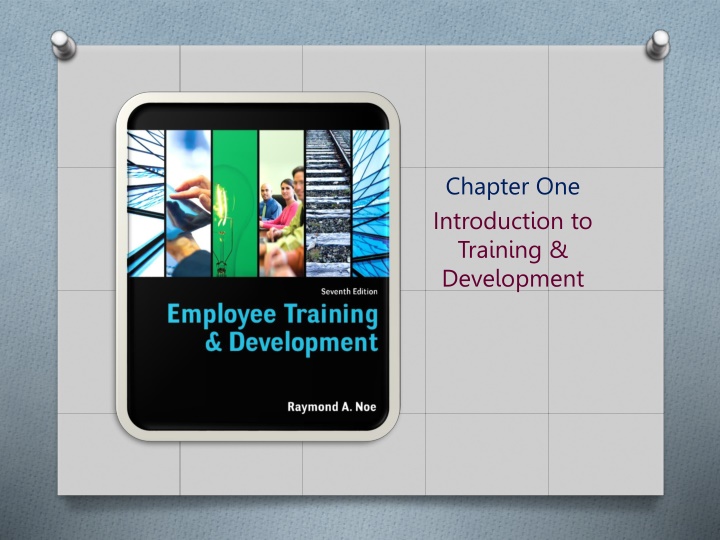
Introduction to Training & Development in the Workplace
This content covers the importance of training in equipping employees with necessary skills, attracting and retaining talent, and creating a competitive edge. It delves into key components of learning, the difference between training and education, systematic training design, and forces impacting learning in today's workplace.
Download Presentation

Please find below an Image/Link to download the presentation.
The content on the website is provided AS IS for your information and personal use only. It may not be sold, licensed, or shared on other websites without obtaining consent from the author. If you encounter any issues during the download, it is possible that the publisher has removed the file from their server.
You are allowed to download the files provided on this website for personal or commercial use, subject to the condition that they are used lawfully. All files are the property of their respective owners.
The content on the website is provided AS IS for your information and personal use only. It may not be sold, licensed, or shared on other websites without obtaining consent from the author.
E N D
Presentation Transcript
Chapter One Introduction to Training & Development
Importance of Training O There are many challenges and opportunities in the workplace today O Equips workers with necessary SKAOS (competencies) O Attracts employees, engages, promotes retention O Creates a competitive advantage
Key Components of Learning O Learning o Acquiring knowledge, skills, competencies, attitudes, or behaviors O Human Capital o Knowledge o Advanced skills o System understanding and creativity o Motivation to deliver high-quality products and services
Key Components of Learning O Training o Facilitates learning job-related competencies, knowledge, skills or behavior O Development o Future focused includes formal education, job experiences, relationships, and assessments O Formal Training and Development o Developed and organized by the company
Training v. Education O Training Reactive - To a specific stimulus (task specific) - E.g. welding O Education Proactive - Discovering novel relationships - E.g. critical thinking/ analysis O Development future focused o - The whole individual - E.g. leadership ability
Analysis Evaluation Design ADDIE Implementation Development
Forces Impacting Learning O Economic cycles O Globalization O Value of intangible assets and human capital O Focus on links to business strategy O Changing demographics and diversity O Generational differences O Talent management O Customer service and quality emphasis O New technology O High-performance models of work systems
Implications O Knowledge workers are becoming more important O A greater focus on employee engagement is needed O There is an increasing need for companies to become learning organizations
Links to Business Strategy O Given the importance of intangible assets and human capital, training has greater strategic importance O Training is no longer an isolated function, but rather an integral part of business success O Different companies have different strategic training needs one size does not fit all
Racial and Ethnic Diversity O The U.S. labor force will continue to grow more racially and ethnically O The projected annual growth rates are higher for Hispanics and other groups than for African Americans O By 2022, the workforce is projected to by 78% Caucasian
Five Generations at Work in 2022 O Traditionalist O Baby Boomers O Generation X O Generation Y Millennials o Millennial interview O Generation Z Digital Natives
Talent Management O Systematic, planned, and strategic effort by a company to attract, retain, develop, and motivate highly skilled talent O Key components o acquiring and assessing employees o learning and development o performance management and compensation
Talent Management O It s important for a number of reasons: o Changes in demand for certain occupations and jobs - (See table 1.4) - M.S. IO psyc / health care o Cognitive and interpersonal skill requirements o Anticipated retirement of baby boomers o Developing managerial talent
Service & Quality Emphasis O Total Quality Management (TQM) o Companywide effort to continuously improve the ways people, machines, and systems accomplish work O Quality Standards o Malcolm Baldrige National Quality Award o ISO 9000:2000
Baldrige Award Criteria O Leadership O Measurement, analysis, and knowledge management O Strategic planning O Workforce focus O Operational focus O Results O Customer focus
Service & Quality Emphasis O Six Sigma o Measuring, analyzing, improving, and then controlling processes once they have been brought within the narrow six sigma quality tolerances or standards
New Technology O Technology has changed how we train O Training can occur at any time, anywhere O Training is more consistent and more realistic O More individuals can now be trained O Knowledge can be shared by readily O Trainers roles have evolved O Many organizations used blended training methods
New Technology O Drones O 3D simulations virtual reality O YouTube how to, trouble shooting O Robotics O FAQs O Social networking o ask our customers O Document sharing
Challenges with New Technology O Not all trainees may be comfortable with technology O It may be difficult to engage trainees and ensure compliance with training O Some trainees may desire greater live interaction with trainers O JIT knowledge ( google it or Alexa)
High Performance Systems O Work teams o Employees interact to assemble a product or provide a service O Cross training o Training employees in a range of skills to fill roles needed to be performed O Virtual teams o Teams separated by time, geographic, and organizational boundaries
Training Roles O Project Manager o Plans and monitors delivery of learning and performance solutions to support the business O Professional Specialist o Designs, develops, delivers, and evaluates learning and performance systems
Professional Associations O Association for Talent Development (ATD) O Academy of Human Resource Development (AHRD) O Society for Human Resource Management (SHRM) O Society for Industrial and Organizational Psychology (SIOP) O Academy of Management (AOM) O International Society for Performance Improvement (ISPI)


